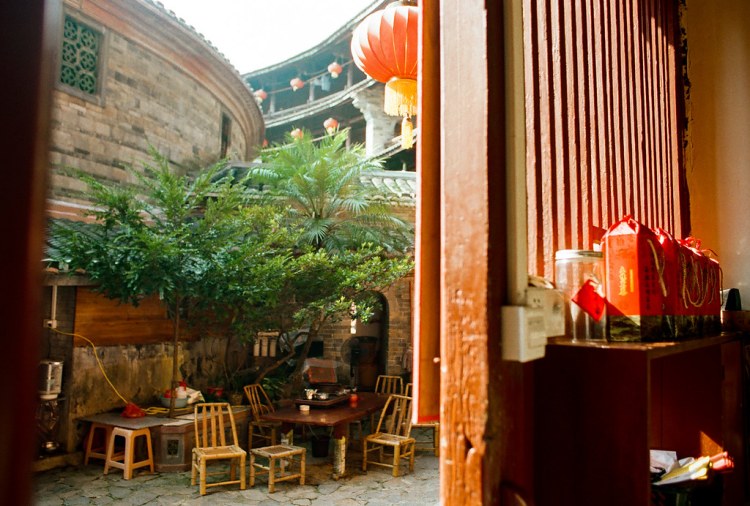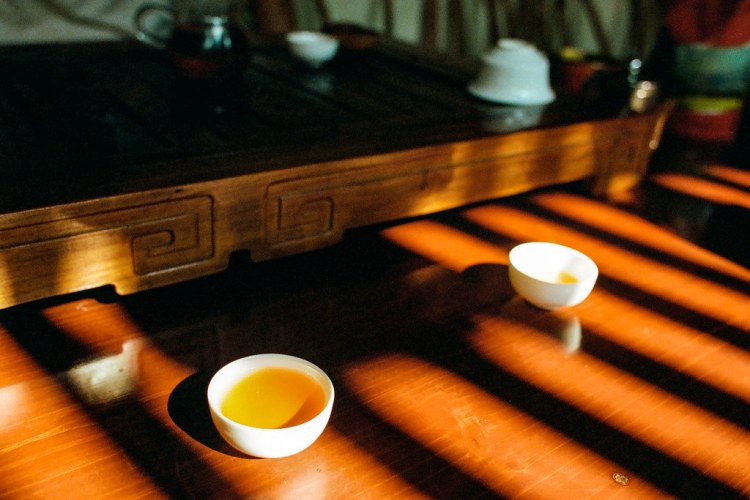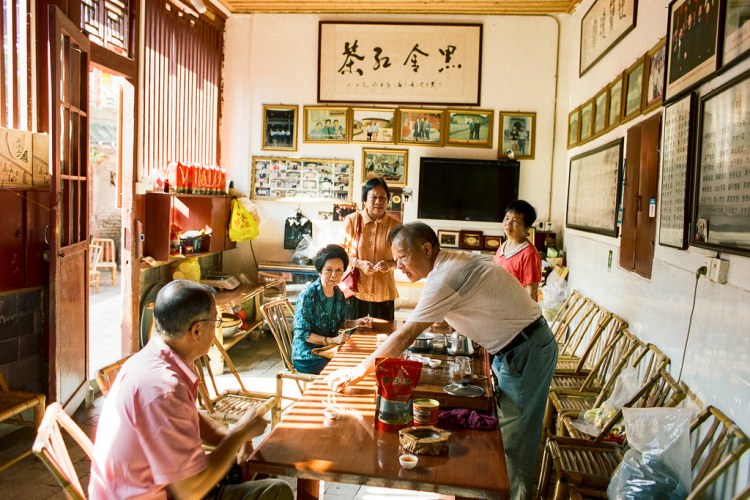
© 2017. Ground level of Zhencheng Lou (振成樓) in Hongkeng Village, Yongding County, Fujian, China. Thursday, Sept. 21, 2017. Portra 400, Canon EOS A2.
Our morning tour was cut short when we were summoned to breakfast, another table heavy with hot and hearty dishes. After we couldn’t eat another bite, it was time to take tea.

© 2017. Tea in Zhencheng Lou (振成樓) in Hongkeng Village, Yongding County, Fujian, China. Thursday, Sept. 21, 2017. Portra 400, Canon EOS A2.
We soon learned that tea would follow every meal (in contrast to my immediate family’s habit of drinking tea during the meal), and would also be served whenever we were meeting someone new. But no matter where or when, over a special tea tray, our host would place tiny, three-sip cups and pour hot water into each to warm the cups. Then, he or she would steep the tea, pour a serving in each cup which we would drink, and steep the same tea leaves again for subsequent servings, until either the conversation (entirely in Chinese) had concluded, it was time to move on to the next excursion, or the tea leaves’ flavor was depleted.

© 2017. Tea at Zhencheng Lou (振成樓) in Hongkeng Village, Yongding County, Fujian, China. Thursday, Sept. 21, 2017. Portra 400, Canon EOS A2.
By the end of the trip, our palate for tea had shifted substantially and our family sent us packing with large quantities of tea from the region. So, in the airport before departing for Taipei, we bought our own tea set — tray and cups and all — to take home with us.
We’ve since moved a couple times (within the same county, between states, within the same metro area), but the tea and the tea set have always been packed and unpacked as a priority item. It’s been unspeakably comforting to have this tea, and to know how to prepare it, and I’m hard-pressed to think of a better way to remember our trip than by making the time to sit down in front of the tray and enjoy multiple infusions.
This «homelandcoming» series features film I shot when I traveled with my grandmother in 2017 to her ancestral home in China, which she had not seen in 74 years.
Some frames show the postcard-perfect scenery of «tulou» (“earthen buildings”) practically untouched by time; others reveal the everyday details that fascinated or amused us, and served to remind us that modern-day life continues for the residents who remain.
As a whole, this series is not a comprehensive visual diary of our trip — rather, it is a selection of a selection, showing the intersections of history and modernity, of authenticity and tourism, and of foreign and familiar.
Leave a comment